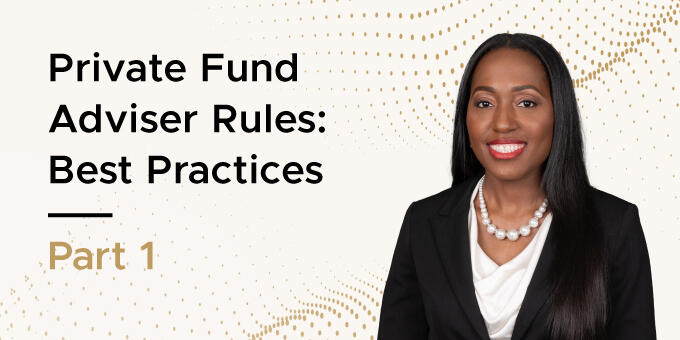
Enterprise Considerations During the Pandemic
- Published
- Jul 23, 2020
- Topics
- Share
The Pandemic’s impact to working conditions has altered the operations of every company in some manner without regard to size, industry and capital structure. In this Podcast series, we explore the remote workforce challenges organizations are facing as a result of COVID-19, and present solutions to address them.
In this inaugural episode of the Remote Workforce Challenges podcast series, Brian Ferrara and Nina Kelleher, senior managers specializing in Process, Risk and Technology Solutions, discuss the difficulties organizations are facing surrounding enterprise considerations as a result of COVID-19.
Transcript
Nina Kelleher: Hello, and welcome to EisnerAmper's podcast. In this podcast series, we explore remote workforce challenges as a result of COVID-19, faced by organizations and some possible solutions. I'm your host, Nina Kelleher, and today we'll be speaking with Brian Ferrara. Brian is a senior manager in process, risk, and technology solutions. He specializes in risk advisory and internal controls. Hi Brian, and thanks for joining me.
Brian Ferrara: Hi, Nina. Thanks for having me.
NK: In this first podcast, the spotlight is on enterprise risk challenges. What are some of the top of mind enterprise risks and issues that have emerged for organizations as the workforce has shifted remote?
BF: So initially organizations spent a lot of time figuring out how to shift employees to a remote workforce environment. The questions were focused around, does the organization have the proper infrastructure in place? Do they have proper collaboration tools, and do individuals have equipment necessary at their homes to continue to do their jobs? Once these challenges were overcome, management began thinking about risk, in particular cyber security. How are processes and controls being executed and monitored? How will their supply chain be effective? Also, how do I deliver tone to the top message virtually and keep employees engaged? And I think more importantly, do I need to refresh my enterprise risk assessment in light of all these changes?
NK:You mentioned revisiting the risk assessment. What are some of the risks that you're seeing increase?
BF:A couple of pop into my mind in light of COVID-19, first, of course, being cyber security. Cyber is always a high risk area. With people working from home, sometimes people are not VPNed into the network. Sometimes they're experiencing problems with their own internet service provider. We're seeing a lot more phishing campaigns and a lot more social engineering. What I'll call the bad guys have gotten very good at getting into the network, being very patient and diligent, watching traffic, understanding the inner workings of an organization, and really striking at the most inopportune time.
Another area really is just the new risks that are evolving from changes in operations, certainly around processing controls and so forth. I'd also call out supply chain and vendor solvency. Really, your supply chain and your vendors are the life of your business. So risk is certainly heightened there.
And lastly, I think a great point is fraud. And I think fraud kind of overlays all the first three, really, working from home, changes in processing and control environment, and in the supply chain vendor solvency, really a lot of times you're trying to get a payment out the door, and these are all just great opportunities for a fraudster to strike and get money out of the company.
NK:Can you talk a little more about supply chain risks and vendor solvency?
BF: COVID-19 has, and for the foreseeable future, will have an unparalleled adverse effect on the global economy and all companies' business operations, regardless of size. Suppliers are more likely to meet insolvency requirement of the U.S. bankruptcy code, therefore precipitating more Chapter 11 filings. Those suppliers are in financial distress. They may request shortened payment terms or cash before delivery security payments, and also require additional financial information from you. Suppliers are now seeking cancellation or suspension of purchase orders and contracts.
I think now is a great time, and I would highly recommend, to evaluate your suppliers via supplier scorecard. Some things to consider, really, essentially you're doing a risk assessment here, but really, who are my key suppliers? Do I have a backup plan if the supplier is unable to meet my needs? Identifying supplier trends. This may be a time where you have to prioritize invoice payments.
I'd also suggest now is probably a great time to do a cleanup of the vendor master file. Really what we see typically, most disbursement inefficiencies, such as duplicate affectations payments, start from the vendor master file. I think overall it's very important to have conversations with vendors now, in order to manage a relationship. Be informed, ask questions, address issues, don't be afraid to talk money. And certainly, probably most importantly, set clear expectations on what you're expecting from your suppliers and what they're expecting from you.
NK:Let's shift to controls. What are some of the main pain points organizations are facing at executing their internal controls?
BF:Processing inefficiencies and manual workarounds were really brought to light throughout the pandemic and continue to happen. There's a lot of issues around manual controls that could be and should be automated, evidencing management review controls, really how do I prove to my auditor that I did review what I'll say the bank reconciliation, or more importantly, some of the higher risk, more subjective controls, such as accruals, estimates, and things of that nature. There's a ton of segregation of duties issues, where people are furloughing employees, people are not in the office, people are doing things a little bit differently. A lot of issues around documentation and retention and version control, as well. I think all of these are really prime candidates for technology solutions. Any kind of tech solution will strengthen your process that lead up to the control, as well as the control itself.
NK:What are some of the solutions organizations can implement to ease the burden of some of these challenges?
BF:First thing that comes to mind really is process automation and workflow automation. There's a lot of tools out there that are very easy to stand up. They're affordable, and provide an immediate impact, an immediate ROI. Some other things may be robotics process automation bots. Bots are great to automate, help reduce processing inefficiencies and redundancies. What we're all seeing a lot now is closed automation software, some tools such as BlackLine, Flowcast. There are wonderful tools for anyone in the mid-market space. Larger mid-market companies are looking at BlackLine. Some of the smaller mid-market companies are looking at Flowcast.
We have been, prior to COVID-19 and throughout COVID-19, we've been working with our clients very closely on tech solutions, kind of helping them identify use cases, select, and implement tech solutions. What I'll say here, if you're not thinking about tech solutions, most are, but if not, now is the time to get involved. And you're actually a little bit late to the game, but I'd certainly advise that.
NK:How are you seeing organizations keep their employees engaged and deliver a consistent message?
BF:So most organizations have made a significant impact to reach out and make sure their employees are doing well during this time. I know some solutions we've seen at our clients, and at EisnerAmper, as well, really is the use of video chat. I think we're all so good with video chat now, and I think we've come such a long way, but it really is important where it's keeping us all connected. Increased frequency of town halls, leadership meetings, projects that encourage collaboration, whether it's through WebEx, Teams, Zoom, I mean, really here is keeping everyone together, keeping everyone informed. And as we look at things like return to work, people want to know more about this, and they also want to know some of the flexibility they may have.
One of the other things I'll mention is flexible schedules. Probably more now than ever, the traditional nine to five, eight to six, whatever that may be, has shifted a little bit, whether you have small children at home, you have sick or elderly that you're taking care of. So the schedules are much more flexible. People are really, I think, working longer and working harder, but companies, and I think, as a firm, we've been wonderful about really accommodating people's schedules and allowing them to kind of push things to later in the day or early in the morning to accommodate.
And lastly, I'll say anything that can bring people together again. What we've done and seen a lot of is company happy hours, virtually, of course, yoga, any kind of firm sponsored event where it is a collaboration and it is bringing people together and keeping them connected.
NK:Brian, are there any last words you want to leave the audience with?
BF:I think number one, really be proactive. There's a lot going on. Things are changing. It's really important to be proactive, stay ahead of things, continuous conversation, transparency throughout the organization, risk assessment and monitoring. It's ongoing. With being proactive, you need to be agile and be ready to pivot and address some of these risks, because they are coming fast, they're coming quickly, and they can have a severe impact on your organization.
And lastly, what I'll say is really leverage technology. What we've learned, that we can work remotely, we can be efficient at remotely, but we can get better with more tech, and those organizations that are using tech, this was a much more seamless transition versus those who are not. You're going to gain the process efficiencies. You're going to process more effectively. You're going to have stronger controls, compliance, and governance.
NK: Brian, thank you for this valuable information. And thank you for listening to the EisnerAmper podcast series. For more information on this and a host of other topics, visit eisneramper.com/prts, and join us for our next podcast on financial risks.
Also Available On
What's on Your Mind?
Start a conversation with Nina
Receive the latest business insights, analysis, and perspectives from EisnerAmper professionals.











